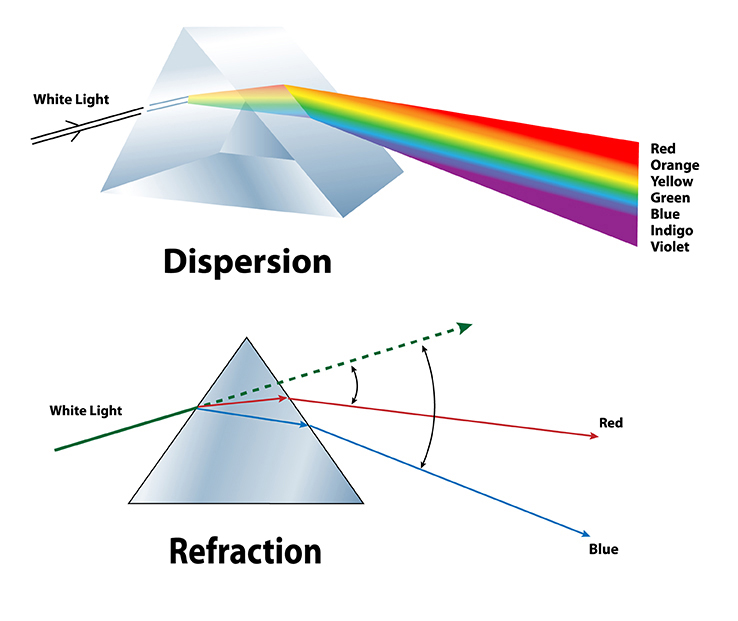Ready to take your understanding of light and optics to the next level? Prisms are fascinating tools that allow us to explore the properties of light in different ways by breaking it up into its spectrum components, creating optical illusions, or even producing 3D images. But did you know there’s much more potential hidden inside a prism than meets the eye?
In this blog post, we’ll be delving deeper into how prisms optical work and how they can help you make extraordinary visual creations! So let’s start by exploring prism and why it’s such an incredible tool for unlocking creative photo opportunities.
Prisms have been around for centuries and have mesmerized generations of creators and inventors. All prisms, regardless of shape and size, have one thing in common; the ability to bend light. Simply put, a prism is a three-dimensional shape with two parallel faces.
When light passes through them, it refracts or splits apart into different wavelengths resulting in a spectrum of colors like the ones we see when a ray of sunshine passes through a droplet of water. Not only are they aesthetically pleasing, but prisms can be quite useful. They play an integral role in many disciplines, such as physics, optics, and engineering, by aiding in exploring laws regarding the properties of light or being used as components within telescopes and lenses.
Prisms are used for various visual effects and creative applications. Here are some of the most common creative uses for prisms:
To create rainbows: Ever wondered how rainbows appear? Prisms play a crucial role in producing these colors of joy! Prisms are special pieces of glass, plastic, or other transparent materials that can refract light. When the light emitted from the sun comes in contact with a prism lens, the rays spread out into the colors (ROY-G-BIV), creating an array of visible colored light or a rainbow. This effect is caused by dispersion, which produces different wavelengths for each color.
To produce 3D images: Have you ever seen a hologram? Just like those displayed in sci-fi movies, it’s possible to create three-dimensional images using an optical prism and laser light. By combining the two elements, a full image is projected onto a flat surface, creating an illusion of depth that can be viewed from different angles.
To create optical illusions: Are you a fan of classic optical illusions? Prisms are excellent tools for producing these mind-bending visuals as they can manipulate and alter the appearance of light by refracting its various colors. This results in shapes and patterns that appear to move or rotate even when still mesmerizing viewers with their unique visual effects.
To explore the properties of light: Prisms are a great tool for exploring the fascinating properties of light. Scientists can better understand how color and light interact by dissecting them into different wavelengths and amplifying their intensity.
To create extraordinary photographs: Prisms are a great tool for creating stunning, one-of-a-kind photos. By placing them in front of your camera lens or holding them up to the sun, you can create unique visuals as the light is refracted into its various components. This creates beautiful rainbow effects that can be used as an eye-catching backdrop for creative photography projects.
Now that we know what prisms are and how they can be used for creative applications, let’s explore the basics of splitting white light with a prism. To begin, let’s set up your equipment. You’ll need a few things:
Once you have all the necessary items, here’s what to do:
Double vision can be an extremely unpleasant experience and distort your view of many things, so seeking a remedy as soon as you notice symptoms is key. One way to go about eliminating double vision within reach is the use of prisms! Prisms are a refractive treatment for double vision, positioning the eyes differently to eliminate the overlapping effect that causes this condition.
Through prism lenses, those suffering from double vision can realign their eyes and restore clarity in their vision field without turning to more invasive treatments. Investing in prism lenses might be the simple yet satisfying solution for crystal-clear sight if you deal with any visual disturbances.
Tricks With a Prism You Can Try
By now, you should understand how prisms work and the many uses they can be put to. But if you’re looking for extra fun with your prism lens, here are some cool tricks you can try!
Create a Kaleidoscope: By combining mirrors and a prism together, you can create a mesmerizing kaleidoscope that refracts light in dazzling patterns. This is especially fun when used outdoors on a sunny day as it will reflect beautiful rainbow colors across any surface it’s pointed at!
Make Light Painting: With the right tools, you can create stunning light paintings with a prism. All you need is an LED flashlight or other light sources along with your prism lens. Hold the prism before the light source and move it around to create fun designs on a dark wall or surface.
Make Suncatchers: Create your suncatcher with a prism lens! All you need is clear glass, wire, and an adhesive such as hot glue. Attach the prism to one end of the wire and secure it with the adhesive. Hang it in a window where sunlight can pass through the prism and create beautiful rainbow reflections on walls or surfaces below.
Prisms have been around for centuries, and those who understand the power of light can use them to explore the properties of light, create extraordinary visuals, and even eliminate double vision. It’s no wonder why prisms are such a popular tool among photographers and creatives! Now that you know how to use a prism, go out and unleash your creativity! Who knows what wonderful works of art you’ll come up with? Happy light-bending!
